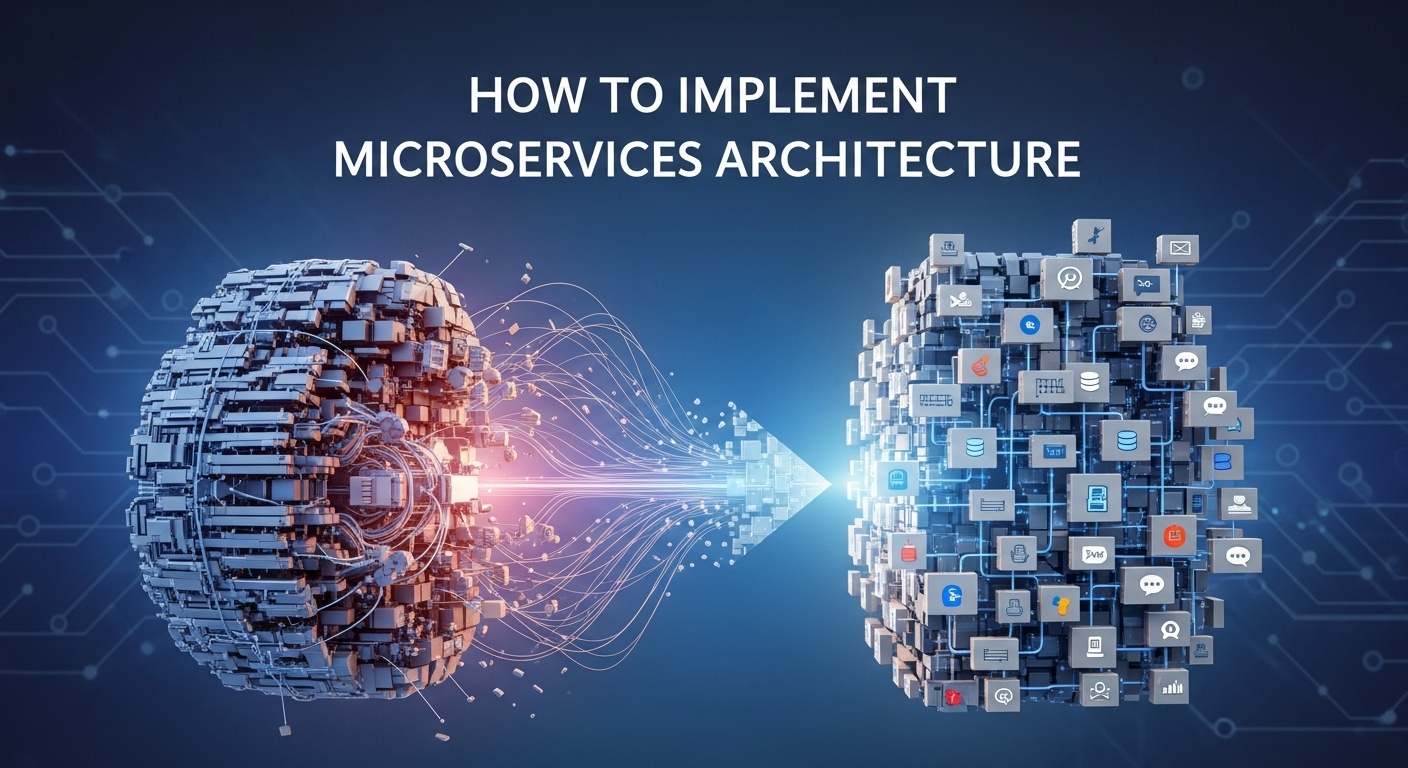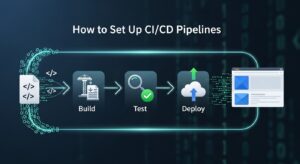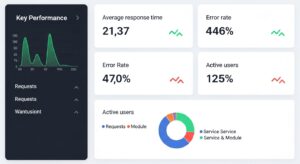When you’re ready to implement microservices architecture in your organization, you’re embarking on a transformative journey that can revolutionize your software development approach. This architectural pattern has become the backbone of modern, scalable applications used by industry giants like Netflix, Amazon, and Google.
But here’s the critical question: Do you truly understand what implementing microservices architecture entails beyond the surface-level benefits everyone talks about?
Let’s explore this together. Before diving into implementation strategies, what’s your current experience with distributed systems? Have you worked with monolithic applications that you’re considering breaking down, or are you starting fresh with a new project?
Understanding Microservices Architecture Fundamentals
To successfully implement microservices architecture, we need to establish a solid foundation. Think of microservices as a way to organize your application into small, independent services that communicate over well-defined APIs.
Consider this analogy: Instead of building a massive department store under one roof (monolithic architecture), you’re creating a shopping district where each store specializes in one thing and operates independently while contributing to the overall shopping experience.
What aspects of your current system architecture are causing the most challenges? Are you dealing with deployment bottlenecks, scaling issues, or team coordination problems?
Step 1: Domain-Driven Design for Microservices Implementation
The first crucial step to implement microservices architecture effectively is identifying service boundaries through Domain-Driven Design (DDD). This approach helps you understand your business domains and natural service boundaries.
Here’s how to approach domain identification:
- Business Capability Mapping: Start by mapping your organization’s core business capabilities. Each capability should potentially become a separate microservice. For example, in an e-commerce platform, you might identify capabilities like user management, product catalog, order processing, and payment handling.
- Bounded Context Analysis: Within each business capability, identify bounded contexts where specific terms and rules apply. A “customer” in your billing context might have different attributes than a “customer” in your marketing context.
Have you considered how your current business processes naturally divide? What are the main workflows in your application that could operate independently?
According to Martin Fowler’s guidance on microservices, proper service decomposition is crucial for successful implementation.
Step 2: Technology Stack Selection for Microservices
When you implement microservices architecture, choosing the right technology stack becomes more complex because different services can use different technologies. This flexibility is both an opportunity and a challenge.
Programming Languages and Frameworks:
- Choose languages that best fit each service’s requirements
- Consider team expertise and learning curve
- Evaluate performance requirements for each service
Database Strategy: Each microservice should own its data. Consider these patterns:
- Database per service
- Shared databases (when absolutely necessary)
- Event sourcing for complex business logic
Communication Protocols:
- Synchronous: REST APIs, GraphQL
- Asynchronous: Message queues, event streaming
What’s your team’s current technology expertise? Are you prepared to manage multiple technology stacks, or would you prefer to standardize initially?
Step 3: Infrastructure and Deployment Strategy
Successfully implementing microservices architecture requires robust infrastructure planning. Container orchestration platforms like Kubernetes have become essential for managing microservices at scale.
Containerization Strategy: Every microservice should be containerized for consistency across environments. Docker provides the standard containerization approach, while Kubernetes handles orchestration.
Service Discovery and Load Balancing: Implement service discovery mechanisms so services can find and communicate with each other dynamically. Tools like Consul, Eureka, or Kubernetes’ native service discovery can handle this.
Infrastructure Component | Purpose | Popular Tools |
Container Orchestration | Service deployment and scaling | Kubernetes, Docker Swarm |
Service Mesh | Service-to-service communication | Istio, Linkerd, Consul Connect |
API Gateway | External API management | Kong, AWS API Gateway, Nginx |
Monitoring | System observability | Prometheus, Grafana, Jaeger |
The Cloud Native Computing Foundation provides excellent resources for understanding the modern microservices infrastructure landscape.
Step 4: Implementing Communication Patterns
When you implement microservices architecture, establishing clear communication patterns is vital. Services need to communicate reliably while maintaining independence.
- Synchronous Communication: Use REST APIs for direct service-to-service communication when immediate responses are required. However, be cautious about creating tight coupling between services.
- Asynchronous Communication: Implement event-driven architectures using message brokers like Apache Kafka, RabbitMQ, or cloud-native solutions like AWS SQS. This approach promotes loose coupling and better resilience.
- Circuit Breaker Pattern: Implement circuit breakers to prevent cascading failures when services become unavailable. Libraries like Hystrix or Resilience4j can help implement this pattern.
How do you currently handle communication between different parts of your application? Are you dealing with any timeout or reliability issues that microservices communication patterns could address?
Step 5: Observability and Monitoring Implementation
The distributed nature of microservices makes observability crucial. You need comprehensive monitoring to understand system behavior and quickly identify issues.
The Three Pillars of Observability:
- Logging: Centralized logging helps you understand what happened in your system. Tools like ELK Stack (Elasticsearch, Logstash, Kibana) or cloud solutions provide centralized log management.
- Metrics: Collect and analyze system metrics to understand performance trends. Prometheus and Grafana are popular choices for metrics collection and visualization.
- Tracing: Distributed tracing helps you follow requests across multiple services. Tools like Jaeger or Zipkin provide request tracing capabilities.
- Health Checks and Alerting: Implement health checks for each service and set up alerting for critical failures. This proactive approach helps maintain system reliability.
Consider visiting the OpenTelemetry project for standardized observability practices across your microservices.
Best Practices for Microservices Implementation
As you implement microservices architecture, following proven best practices will significantly impact your success:
- Start Small: Begin with a pilot project or extract a single service from an existing monolith. This approach allows you to learn and refine your processes before scaling.
- Team Organization: Structure teams around services (Conway’s Law). Each team should own the entire lifecycle of their services, from development to production support.
- Data Management: Ensure each service manages its own data. Avoid shared databases between services to maintain independence and reduce coupling.
- Security Implementation: Implement security at multiple levels – service-to-service authentication, API gateways for external access, and network segmentation.
- Testing Strategy: Develop comprehensive testing approaches including unit tests, integration tests, contract tests, and end-to-end tests. Tools like Pact can help with contract testing between services.
What challenges do you anticipate in your specific context? Are there particular aspects of microservices implementation that concern you most?
Common Implementation Challenges and Solutions
When organizations implement microservices architecture, they often encounter predictable challenges. Understanding these beforehand helps you prepare effective solutions.
- Distributed System Complexity: Managing multiple services increases operational complexity. Solution: Invest in automation, monitoring, and standardized deployment processes.
- Data Consistency: Maintaining consistency across services without distributed transactions is challenging. Solution: Embrace eventual consistency and implement saga patterns for complex transactions.
- Network Latency: Service-to-service communication introduces network overhead. Solution: Design services with appropriate granularity and implement caching strategies.
- Testing Complexity: Testing distributed systems is more complex than testing monoliths. Solution: Implement comprehensive testing strategies including contract testing and service virtualization.
The Netflix Technology Blog offers real-world insights into solving microservices challenges at scale.
Measuring Success in Microservices Implementation
How will you know if your microservices implementation is successful? Define clear metrics and success criteria:
- Development Velocity: Measure deployment frequency and lead time for changes. Successful microservices implementations typically see improved development velocity.
- System Reliability: Track system uptime, error rates, and mean time to recovery. Microservices should improve overall system resilience.
- Team Autonomy: Assess how independently teams can work and deploy their services. Increased autonomy is a key benefit of microservices.
- Scalability Metrics: Monitor how easily you can scale individual services based on demand. This flexibility is a primary advantage of microservices architecture.
Conclusion
Successfully implementing microservices architecture requires careful planning, the right technology choices, and a deep understanding of distributed systems principles. The journey from monolithic to microservices architecture is not just a technical transformation—it’s an organizational evolution that affects how teams work, how systems are designed, and how businesses deliver value to customers.
What’s your next step? Are you ready to identify your first service boundary, or do you need to invest in infrastructure capabilities first? The path to successful microservices implementation begins with honest assessment of your current state and clear vision of your desired outcomes.
By following these five essential steps and maintaining focus on both technical excellence and organizational readiness, you’ll be well-positioned to implement microservices architecture that delivers real business value while avoiding common pitfalls that trap many organizations in complexity without benefit.











